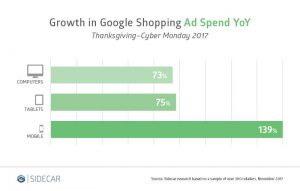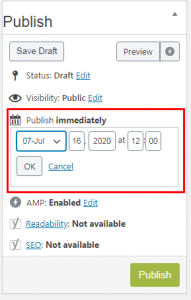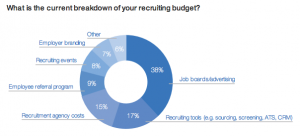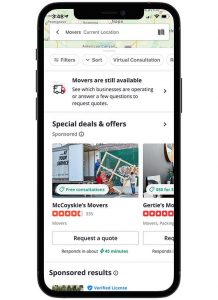With consumers using a plethora of devices to research and make purchases, columnist Soo Jin Oh believes getting a handle on mobile intent is crucial for marketers.

Nearly every marketer can benefit from data that helps pinpoint key moments in a customer’s journey. This data can come in the form of search keywords, purchase intent, and site interactions, but it can also come from very different devices.
Marin Software projected last year that mobile devices would account for over 50% of paid search clicks by 2015. Additionally, eMarketer recently reported that nearly 200 million users are expected to search on mobile by 2018.
With consumers increasingly using a plethora of devices for research and purchasing decisions, it’s important that marketers analyze data across multiple online environments to understand signals of intent.
Below are four varying factors that impact intent: the time element, local flavor, on-the-go component and functionality considerations.
Time Element
A majority of mobile searches are aimed at finding a quick answer, compared to longer windows of research that have typically been done on a desktop. Because of this, the time between the initial point of intent and action is likely to be shorter for smartphones.
This means that if you’re looking to reach consumers based on mobile searches vs. desktop searches, you have a much smaller window of time to engage, influence and drive conversions. Time elements may also play into the types of products researched on devices.
For example, consumers spend time researching detailed information about cars on the desktop. But on mobile, people are highly engaged in price comparison and interaction when they are in a physical showroom.
According to a study by Placed Inc., 63% of car shoppers now use their smartphones to do research and make decisions while at the actual dealership. The window of time to conversion and the type of product all play a role in the way consumers show intent across screens.
Local Flavor
Mobile search tends to have a high degree of local intent. This presents a huge opportunity to advertisers with regional store locations.
The ability to tie local based search into advertising strategies will help close the gap between online and offline activities and open up new doors for long tail advertisers. Local strategies might focus on driving in-store conversions compared to purchases on the actual mobile device.
This might include features related to “store locators” or “click to call.” Utilizing GPS built into devices is an important element for advertisers to consider when building out local strategies and campaigns aimed at driving in-store traffic.
On-The-Go Component
The “on-the-go” factor is a major difference when determining intent across devices. According to a Google survey, 83% of smartphone users don’t leave home without their device.
This on-the-go factor provides marketers with a direct channel for capturing intent beyond the time spent on a desktop, allowing for continuous messaging and the ability to electronically place coupons and promotions in the hands of their customer at any given time.
Another tool that helps analyze intent is QR codes, which provides a strong indicator of intent and a consumer’s interest generally available from a mobile device.
On the other hand, the size and portability of tablets makes them a more prominent device for shoppers to browse, and they have also proven to have a higher conversion rate, rivaling that of even desktops.
So while tablets seem to resemble desktop behavior more than smartphones, they’re far less mobile than the device that can fit in the palm of your hand.
Functionality Considerations
Making sure your site is mobile-ready is not an easy task. However, it can play a role in the ability to capture data that can inform when your customers are in-market for your product.
On a desktop, site level intent is fairly easy to gather, interpret and use for effective and hyper-relevant advertising. On mobile, it can be a bit harder to uncover certain degrees of intent.
For example, not all mobile sites have all the products listed, which automatically may result in missed opportunities for product-level intent. And collecting granular data of interactions across applications is much more challenging than on the web.
Further, purchase intent data might also differ by device since conversion rates tend to be higher on larger screens. In concert with the insights above, Monetate’s data from Q4 2014 shows that conversion rates were significantly higher on desktops and tablets.
Distinguishing intent by device allows for more granular analytics to be integrated into media planning and buying strategies, which could lead to better performance and more relevant advertising for the end user. Marketers shouldn’t focus on creating separate strategies by device; rather, they should analyze all data inputs and outputs across platforms to build out new strategies, measure results and inform future campaigns.
Some opinions expressed in this article may be those of a guest author and not necessarily Marketing Land. Staff authors are listed here.
(Some images used under license from Shutterstock.com.)
(308)









